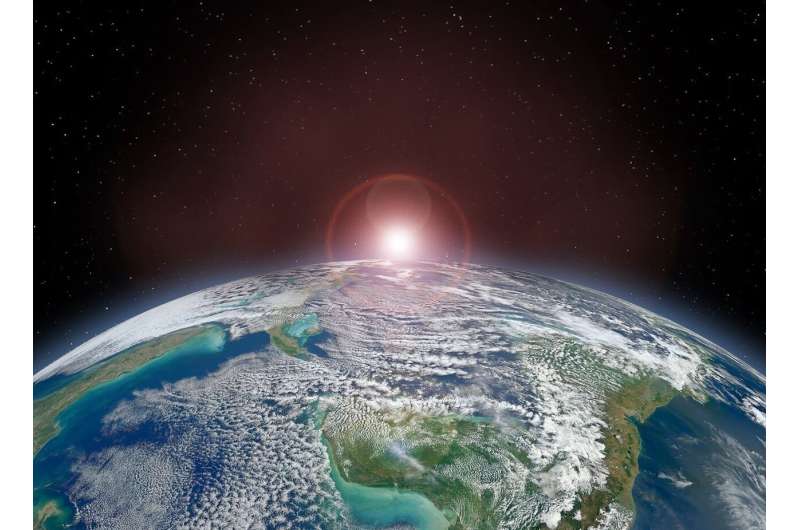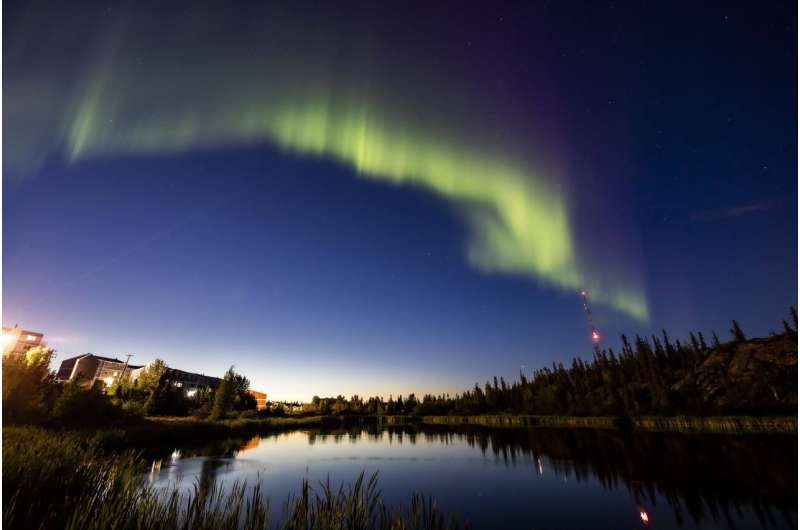Deep Blue Aerospace secures strategic funding, landmark VTVL rocket test soon
Tuesday, 13 August 2024 13:32
Wildfires rage across Athens
Tuesday, 13 August 2024 11:31 Image:
Image:
Firefighters in Greece are battling a rapidly spreading wildfire that has swept across several neighbourhoods in Athens, Greece, on Monday. Thousands of residents have been evacuated as the massive fire reached the suburbs of Athens, with some flames reaching heights of 25 m.
This image shows the fires surrounding Athens on 12 August 2024, captured by the Copernicus Sentinel-2 mission. This image has been processed in a way that highlights vegetation in red, while the burned areas can be seen in black. The estimated affected area exceeds 100 sq km.
In response to the fires, the Copernicus Emergency Management Service was
SpaceX announces new private mission on 1st human polar orbit spaceflight
Tuesday, 13 August 2024 11:11
SpaceX has lined up more business for its human spaceflight program with a private launch from Florida that will take its passengers on a polar orbit for the first time.
The mission called Fram2 that could launch from the Space Coast before the end of 2024 is headed up Chun Wang of Malta, according to a post on the SpaceX website. Wang is an entrepreneur who made a fortune in cryptocurrency and an avid adventurer.
Along for the ride will be fellow adventurers Eric Philips of Australia, Jannicke Mikkelsen of Norway and Rabea Rogge of Germany. Mikkelsen will take the role of mission commander and Philips the role of pilot.
SpaceX has flown 13 missions and 50 humans so far on its fleet of four Crew Dragon capsules, and was working on a fifth. It's unclear if Fram2 will fly on the new Crew Dragon, but it will feature a cupola attachment as opposed to the docking apparatus needed for when Crew Dragon spacecraft fly to the International Space Station.
The Crew Dragon Resilience flew with such an attachment, allowing for better views of space and Earth, when it took up billionaire Jared Isaacman for the first time on the Inspiration4 mission in 2021.
Weapons in space: Study suggests path forward for arms control
Tuesday, 13 August 2024 09:15

Arctic Weather Satellite: advancing weather forecasting in a changing climate
Tuesday, 13 August 2024 07:00 Video:
00:04:38
Video:
00:04:38
The effects of the climate crisis are felt more acutely in the Arctic than anywhere else on the planet. The weather in the Arctic is not only severe, but it changes extremely quickly. More frequent data are urgently needed to improve weather forecasts for this susceptible polar region.
Enter ESA’s Arctic Weather Satellite: a brand new prototype mission to show exactly how this can be achieved. The satellite will provide precise, short-term weather forecasts for the Arctic region. It is equipped with a 19-channel cross-track scanning microwave radiometer which will provide high-resolution humidity and temperature soundings of the
EU warns Musk over 'harmful content' ahead of Trump interview
Tuesday, 13 August 2024 04:39 The EU's top digital official wrote to Elon Musk Monday to remind him of his legal duty to stop "harmful content" from spreading on X, hours before the tech billionaire interviews Donald Trump live on the platform.
"With great audience comes greater responsibility," the bloc's internal market commissioner Thierry Breton posted on X, along with the letter laying out Musk's obligations to comb
The EU's top digital official wrote to Elon Musk Monday to remind him of his legal duty to stop "harmful content" from spreading on X, hours before the tech billionaire interviews Donald Trump live on the platform.
"With great audience comes greater responsibility," the bloc's internal market commissioner Thierry Breton posted on X, along with the letter laying out Musk's obligations to comb SpaceX launches new round of Starlink satellites after Sunday scrub
Tuesday, 13 August 2024 04:39 SpaceX successfully launched a new round of 23 Starlink satellites into low-Earth orbit on Monday morning after a previous launch opportunity was scrubbed on Sunday.
The Falcon 9 rocket lifted off at 6:38 a.m. EDT and SpaceX confirmed the satellite payload was deployed about an hour later.
"Rise and shine with Falcon 9," SpaceX wrote on social media.
The launch from the Ke
SpaceX successfully launched a new round of 23 Starlink satellites into low-Earth orbit on Monday morning after a previous launch opportunity was scrubbed on Sunday.
The Falcon 9 rocket lifted off at 6:38 a.m. EDT and SpaceX confirmed the satellite payload was deployed about an hour later.
"Rise and shine with Falcon 9," SpaceX wrote on social media.
The launch from the Ke Airbus and Astroscale expand in-orbit servicing partnership
Monday, 12 August 2024 20:57

One SpaceX launch scrubbed, another still a go
Monday, 12 August 2024 20:12 SpaceX scrubbed its planned launch of a Falcon 9 rocket from Launch Complex 39A at Kennedy Space Center in Florida Sunday just 46 seconds before it was scheduled to blast off, the company announced.
"Vehicle and payload are in good health and teams are resetting for a launch attempt on Monday, August 12," SpaceX said in a post on X.
The launch was scheduled to carry the next in a
SpaceX scrubbed its planned launch of a Falcon 9 rocket from Launch Complex 39A at Kennedy Space Center in Florida Sunday just 46 seconds before it was scheduled to blast off, the company announced.
"Vehicle and payload are in good health and teams are resetting for a launch attempt on Monday, August 12," SpaceX said in a post on X.
The launch was scheduled to carry the next in a Faint auroras may be visible in Northern Hemisphere skies after weekend solar storms
Monday, 12 August 2024 17:35
Solar storms persisting from the weekend may produce faint colorful auroras across the Northern Hemisphere, with little disruption to power and communications, space forecasters said Monday.
The sun has shot out at least five strong solar flares since Saturday containing clouds of high-energy plasma that can interfere with power grids and scramble GPS signals, according to the U.S. National Oceanic and Atmospheric Administration. But no major communication problems have been reported so far, said NOAA spokesperson Erica Grow Cei.
Unusually strong solar storms in May produced jaw-dropping aurora displays across the Northern Hemisphere.
NASA payload to fly on first Blue Origin lunar lander mission
Monday, 12 August 2024 12:35










